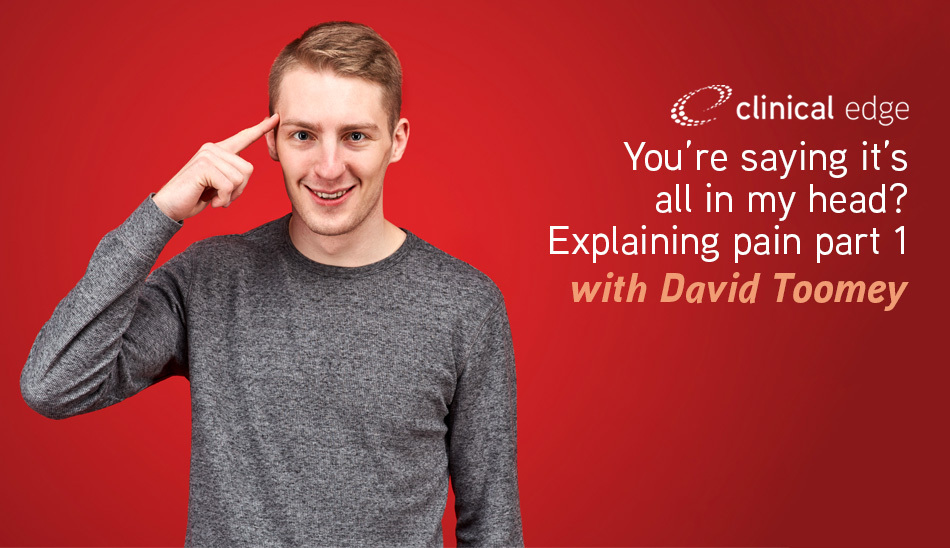Helping patients make sense of their persistent or complex pain, without it sounding like “It’s all in your head” can be a seriously daunting task. It can also be the difference between failed rehab and celebrating a successful recovery with your patient.
Pain science is dense stuff…periaqueductal this, amygdala that. It can be hard to wrap your head around how that relates to the patient sitting in front of you, let alone put it into terms that make sense to your patient!
Make your explanations of pain too complex and you’re in danger of your patients eyes glazing over, while they wonder if you’ll ever move onto some “actual treatment or exercises”. Over-simplify, and it can sound like you’re belittling their pain and saying “it’s all in your head”.
Now available - You’re saying it’s all in my head? Explaining pain part 1 with David Toomey
This two part presentation with David Toomey (NZ Musculoskeletal Physio, PhD Candidate) will help you turn complex pain science into simple, meaningful explanations that your patients will easily understand. You’ll know how to successfully sprinkle pain science into your patients rehab, to maximise their recovery, even when you’re short on time.
In part one of this presentation, you’ll explore case studies and practical strategies you can use immediately, including:
- 5 common pain education mistakes that may be limiting your treatment results and how to avoid them.
- 6 practical strategies to improve your explanations and help patients make sense of their pain.
- How to effectively use pain education with your patients.
- How to apply the latest research on pain education.
- How to incorporate pain education into your treatment sessions, even when you’re short on time.
In part two of this presentation, you’ll discover how to use metaphors to help your patients turn the tables on their pain. You’ll explore how the strategies in this presentation were used to successfully treat a persistent low back pain patient, and how you can use the same strategies to improve your success with complex and persistent pain patients.
CLICK HERE to improve your assessment & diagnostic skills with a free trial Clinical Edge membership

